By: Tara Littlefield, Office of Kentucky Nature Preserves Botanist/Kentucky Plant Conservation Manager
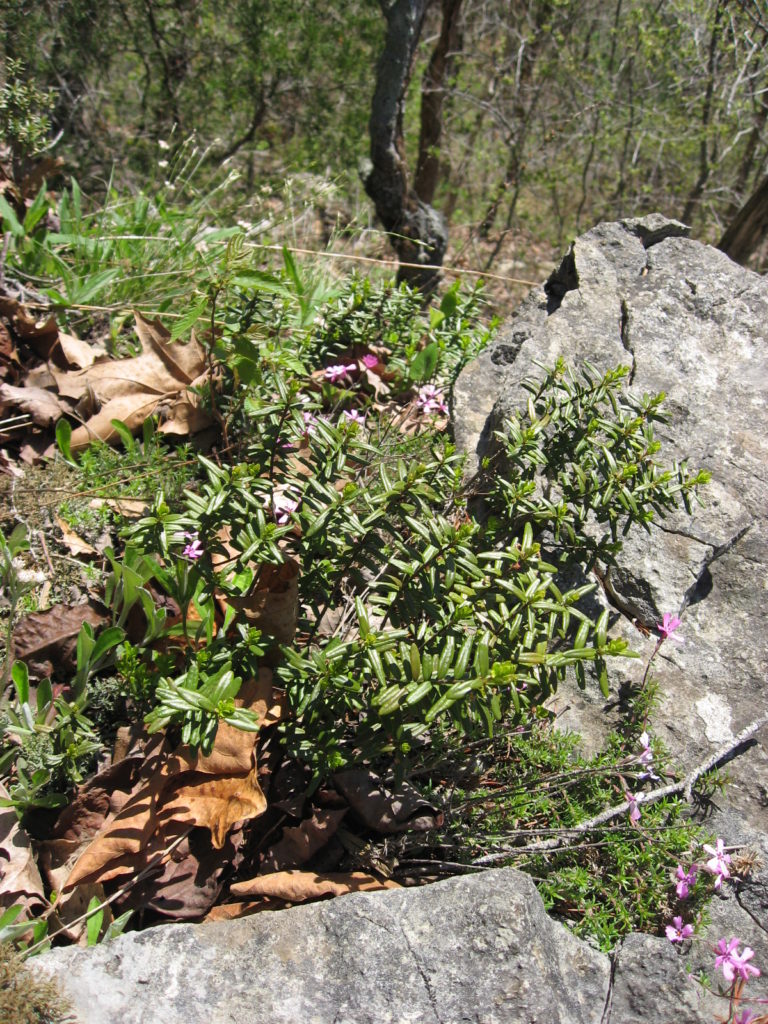
Mountain lover (Paxistima canbyi) in Carter County, Kentucky (Photo by T. Littlefield) 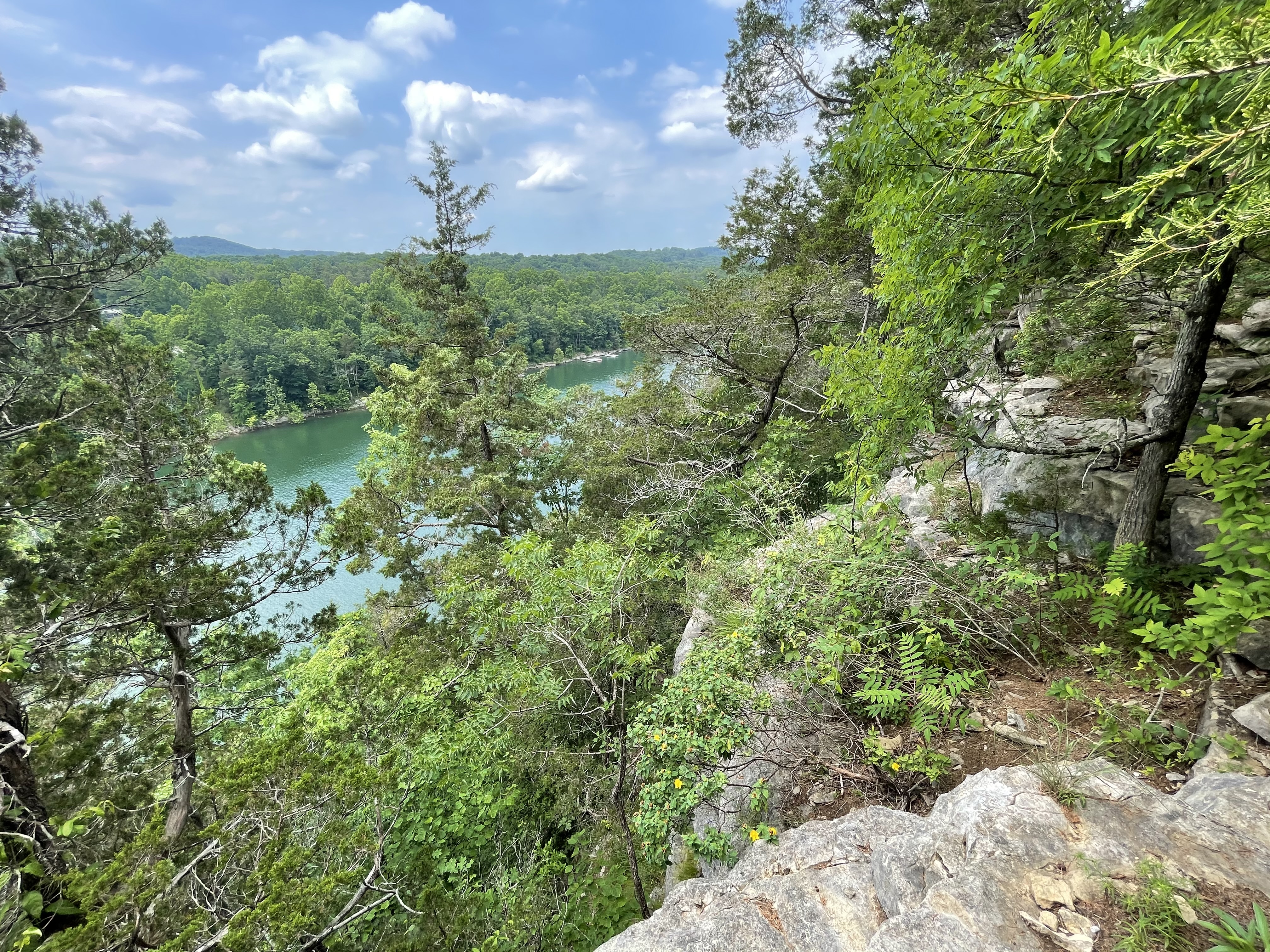
Limestone outcrops/Mountain Lover habitat overlooking the Cumberland River in Pulaski County, Kentucky (Photo by T. Littlefield)
Mountain Lover (Paxistima canbyi) is a globally rare (G2), small evergreen shrub in the bittersweet family (Celastraceae). This shrub is occurs in Kentucky (S2), Maryland (S1), Ohio (S1), Pennsylvania (S2), Tennessee (S1), Virginia (S2), and West Virginia (S2), and is listed as state threatened or endangered throughout its range. This interesting shrub grows clonally and can form dense patches with stems reaching 6-12 inches. Fruit development and seed production are reportedly quite rare in the wild and there may be fewer than sixty genetically distinct plants throughout its entire range due to its clonal nature, further compounding its rarity.
One interesting note about the mountain lover is that it is thought to be an ancient glacial relict species, a remnant from a long lost ecosystem that occurred in this region prior to the last glaciation some 20,000 years ago. The late Dr. E. Lucy Braun, the esteemed plant ecologist from Cincinnati, had an interest in this plant and speculated that the mountain lover was an ancient glacial relict species that occurred along a pre glacial river system called the Teays River. I wonder how long these remnant populations have been clinging to the limestone cliffs and how old the root systems are of these clonal shrubs, perhaps thousands, even tens of thousands of years old?
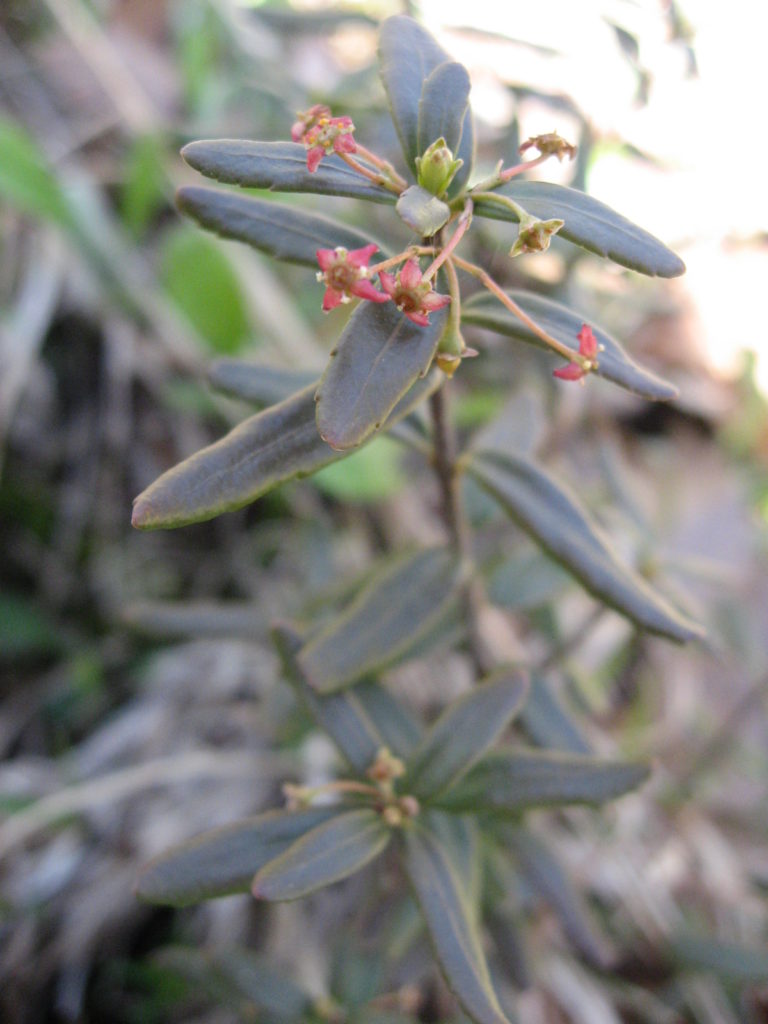
Mountain lover has very small green/marron flowers with four sepals
and four petals arising from upper leaf axils. While I occasionally see it flower, i have never found any fruits (photo by: T. Littlefield)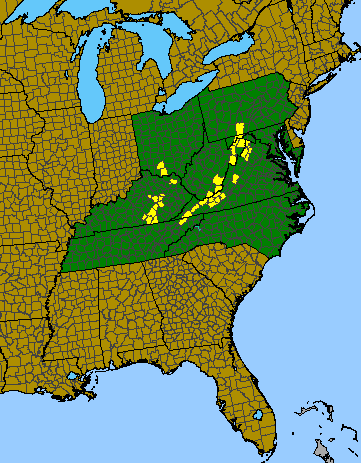
Global Range of Mountain Lover. http://bonap.net/MapGallery/County/Paxistima%20canbyi.png 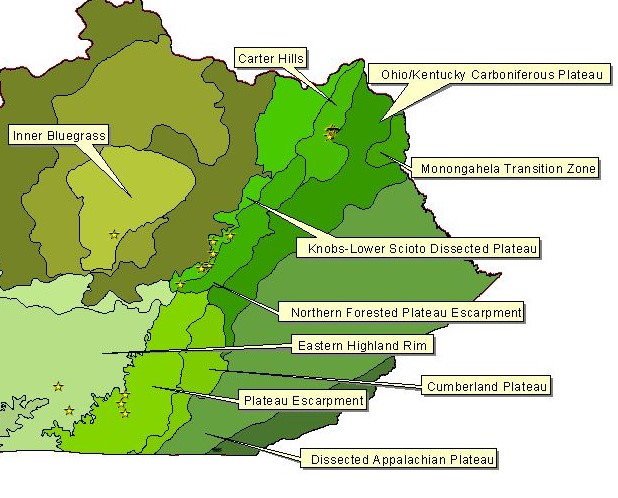
Natural regions where mountain lover is found in Kentucky
I have long been fascinated by this plant and the limestone cliff and outcrop habitats where it grows. In Kentucky, It occurs in several sub regions of the interior low and Appalachian plateaus, including the inner bluegrass, the knobs, and the cliff section/intersection of the eastern highland rim and Cumberland Plateau. It is associated with limestone rocky ledges and cliffs, with an overstory/midstory of Chinkapin oak (Quercus muehlenbergia), Blue Ash (Fraxinus quadrandulata), Eastern Red cedar (Juniperus virginiana), and eastern hophornbeam (Ostrya virginiana). The herbaceous/shrub layer includes shrubby st. johns wort (Hypericum prolificum), fragrant sumac (Rhus aromatica), smooth rockcress (Boechera laevigata), limestone cliff sedge (Carex eburnia), purple cliff break fern (Pellaea atropurpurea), and wild columbine (Aquilegia canadensis). The limestone cliffs and outcrops typically occur in deep ravine gorges that form unique microclimates that also provide habitat for other glacial relict disjunct rare species such as Canada yew (Taxus canadensis), walter’s violet (Viola walteri), northern white cedar (Thuja occidentalis), glade phlox (Phlox bifida var. stellaria), purple oat grass (Schizachne purpurscens) and snow trillium (Trillium nivale). The overall community assemblages of the mountain lover sites are unique between the various regions, and we are currently working with NatureServe to classify these plant communities to determine global rarity and classifications.
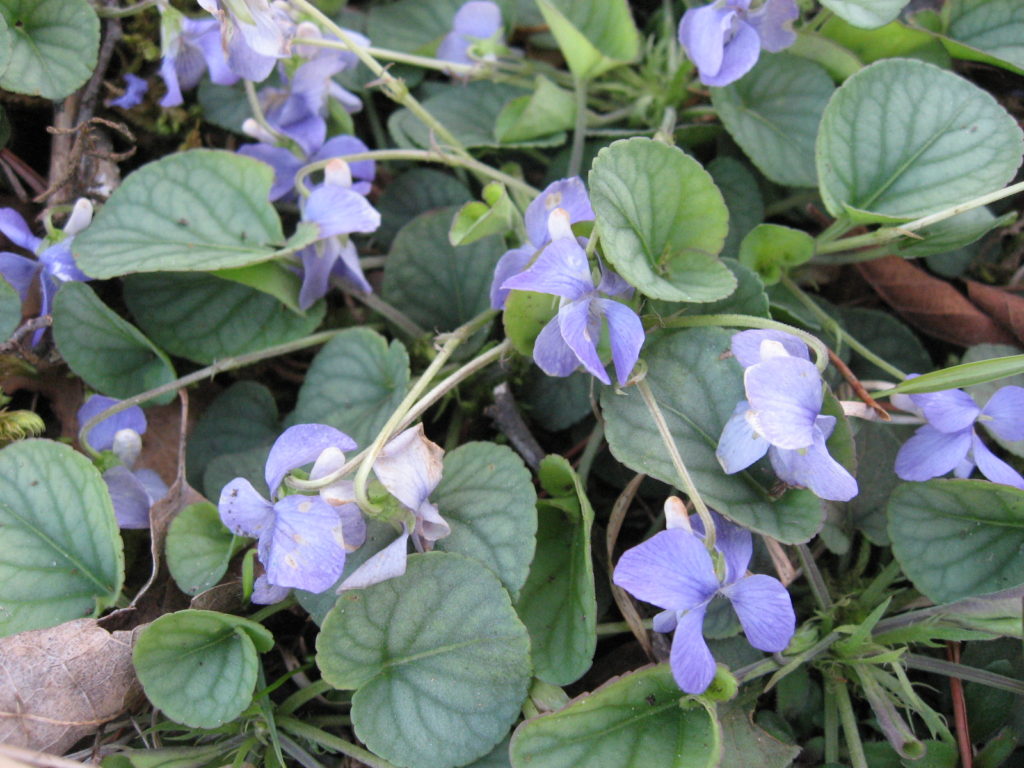
Walters violet (Viola walteri, S1) grows with mountain lover in Carter county, KY, Photo: T. Littlefield 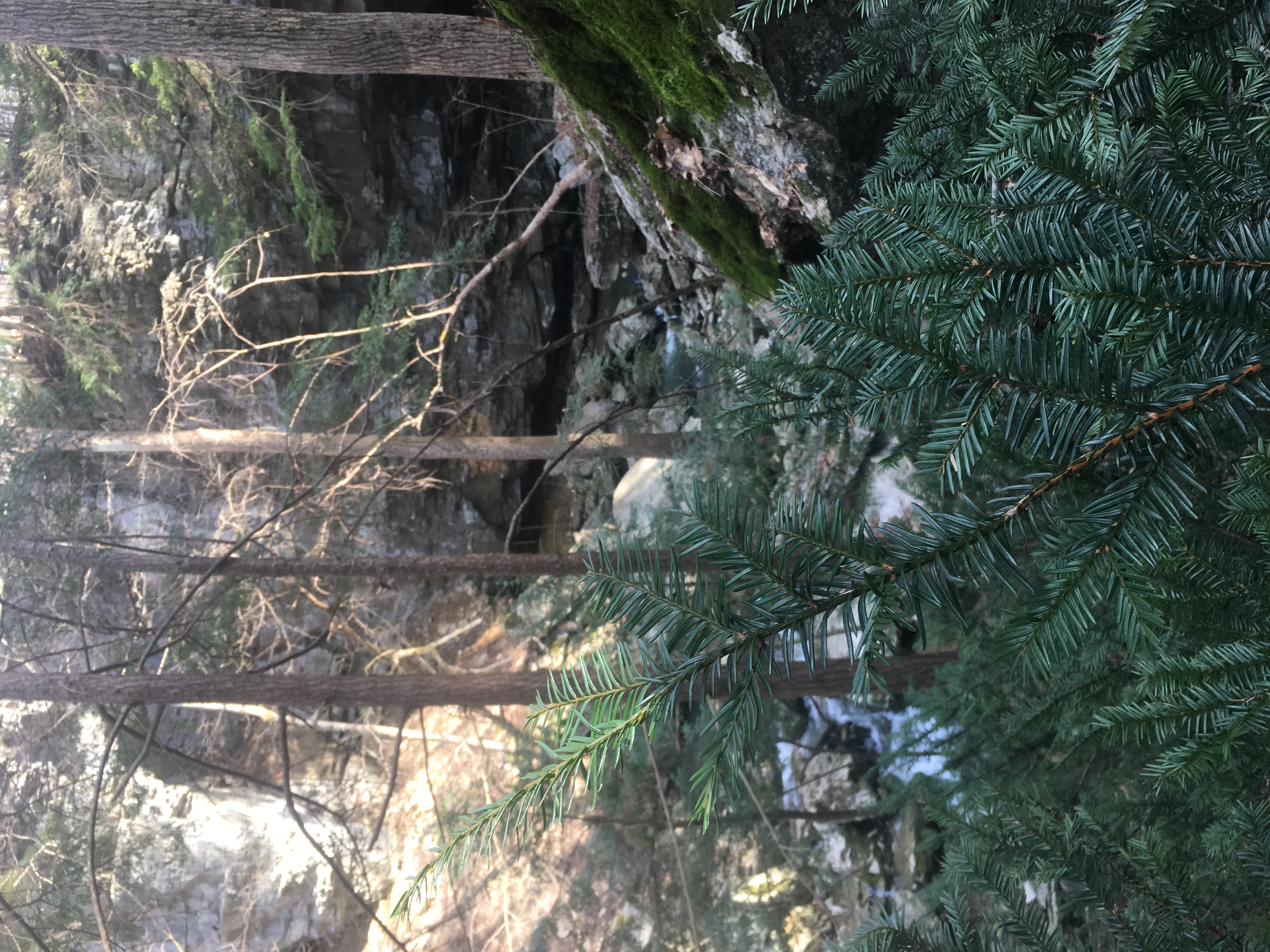
Canada yew (Taxus canadensis, S1), glacial relict disjunct rare plant grows with mountain lover in Carter county, KY, Photo: T. Littlefield 
Gnarly Eastern red cedars (Juniperus virginiana) grow on the limestone cliffs/mountain lover habitat in Estill county, KY, Photo: T. Littlefield 
Overlook at a mountain lover site in Estill county, KY, Photo: T. Littlefield 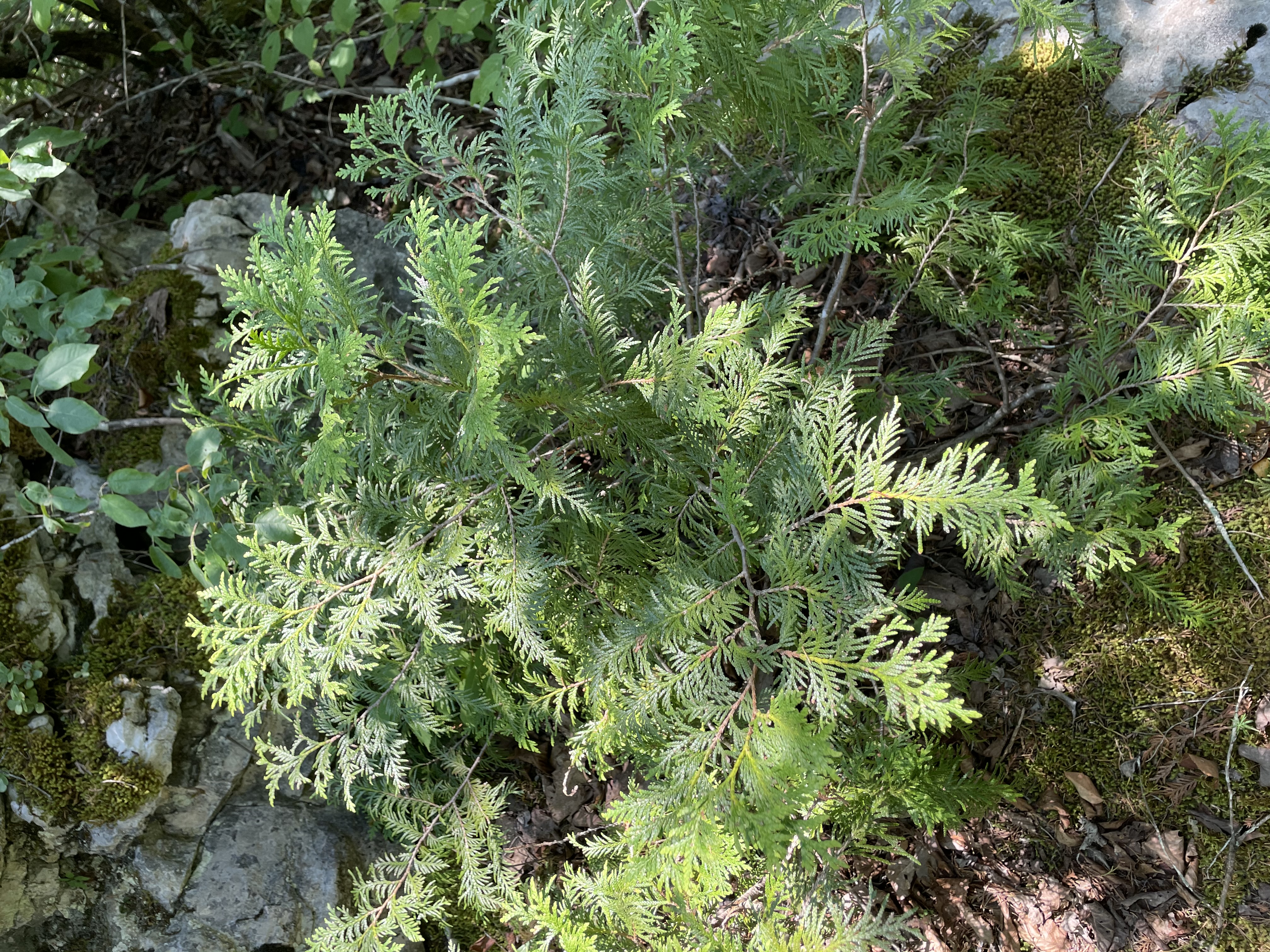
Northern White Cedar (Thuja occidentalis, S1), a glacial relict disjunct rare tree, grows with mountain lover in Wayne county, KY, Photo: T. Littlefield 
View from below the limestone cliffs at a mountain lover site in Madison county, KY, Photo: T. Littlefield
Another common name of this plant is the “rat stripper” due to its relationship with eastern wood rats (Neotoma magister) that co-occur in the limestone outcrop habitats. These animals have been known to sever the woody stems to utilize in nests building along the cliffs. I have personally observed this phenomena at one of our Kentucky sites in Estill County, where I came upon a population with hundreds of freshly severed stems, wood rat tracks and nesting signs. I collected a few of the fresh cut stems and rooted them in potting mix after that trip. Could wood rats also play a role in expanding mountain lover populations along the cliff lines by inadvertently planting some as they drop stems along the cliff lines?
Major threats to the mountain lover include invasive plants such as bush honeysuckle (Lonicera maackii), Euonymus scale (Unaspis euonymi, a small non-native aphid-like bug), timber removal, deer browsing and climate change. The majority of populations occur on private lands so development of the cliff tops has impacted a few populations and could be a threat to several more. Perhaps the greatest threat in Kentucky appears to be from the Euonymus scale, with over 50% of our populations experiencing declines due to this nonnative bug. Euonymus scale not only effects populations of mountain lover, but most species in the bittersweet family are affected as well, such as the eastern wahoo (Euonymus americana) and American bittersweet (Celastris americana). Due to the steep, cliff habitat where mountain lover occurs, there could be undiscovered populations that are inaccessible to humans. Additional surveys for new populations could further our understanding of the species and help evaluate its conservation status.
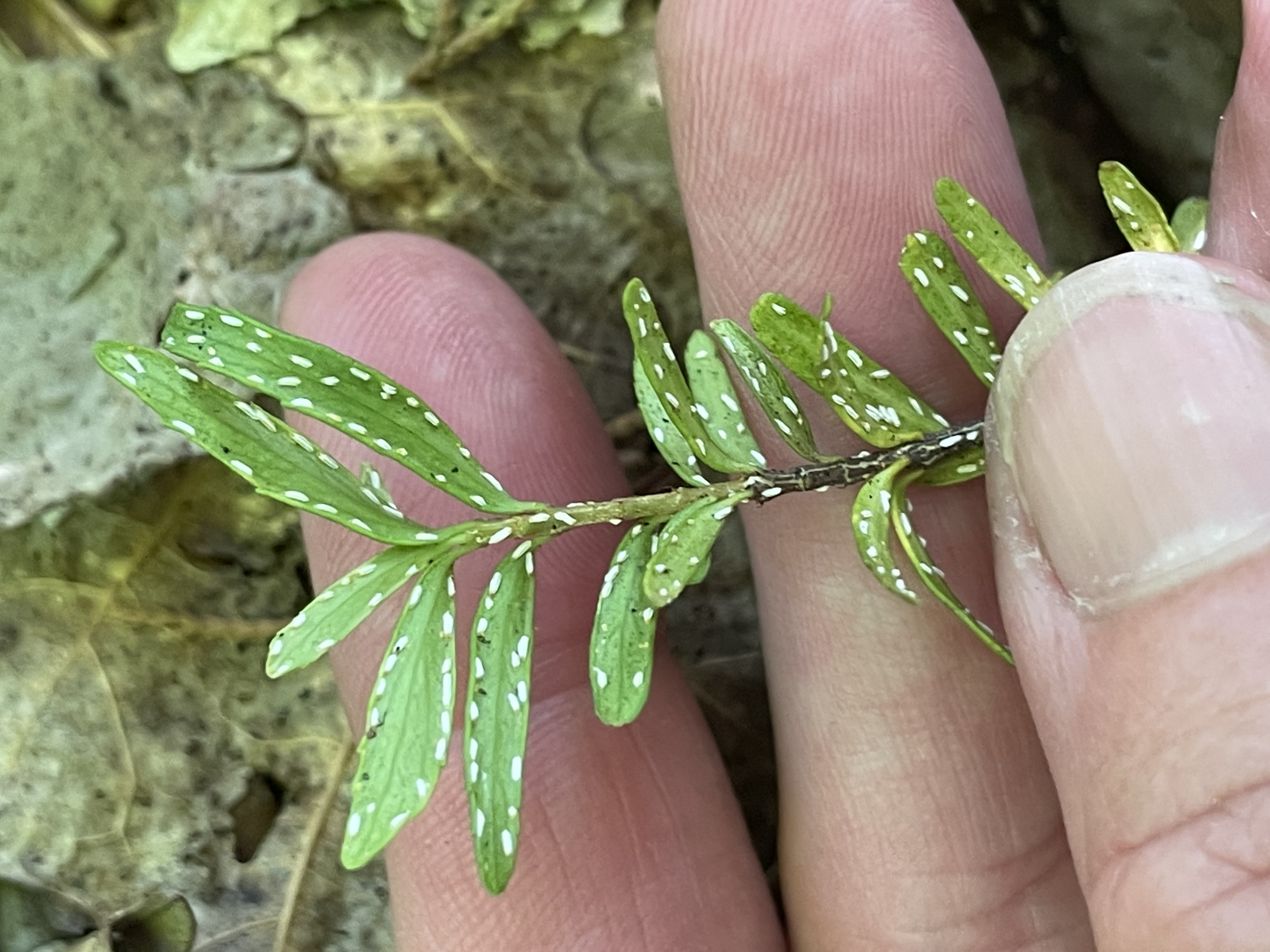
Euonymus scale infestation on Mountain Lover population in Madison County, Kentucky. Photo by T. Littlefield. For more info on Euonymus scale visit https://entomology.ca.uky.edu/ef428 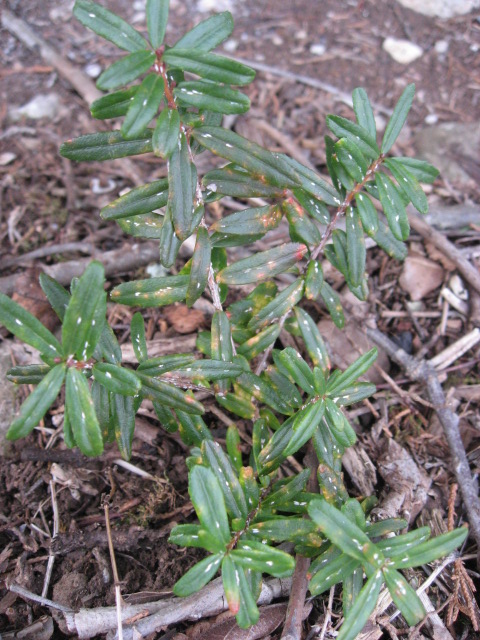
Medium infestation of Euonymous scale in a mountain lover population in Powell county, note yellowing of leaves, several dead patches were nearby, Photo by T. Littlefield
We know that mountain lover is globally rare, has numerous threats, and occurs primarily on private land. So how can we work together to preserve this unique species? Conservation measures include networking with landowners that harbor mountain lover populations, targeting land acquisition projects to include these priority private sites, manage populations for the euonymus scale, and increase ex situ conservation efforts with horticulturalists. In June of 2021, recent efforts by the Office of Kentucky Nature Preserves, Kentucky Plant Conservation Alliance, and the Atlanta Botanical Garden along with partners at the Daniel Boone National Forest, Berea College forest and several private landowners focused on visiting populations in all of the sub regions in Kentucky and collecting living samples to propagate for ex situ conservation and future introductions. Site evaluations, natural community assessments and rare plant updates were also conducted as a part of this collection trip. Having additional sites on public lands would allow researchers and biologists more opportunities for monitoring and managing these populations into the future. Conservation horticulturalist John Evans at the Atlanta Botanical Garden is now currently growing plants from 5 populations in Kentucky for future introductions within OKNP natural areas in the inner Bluegrass, Daniel Boone national Forest lands in the Cumberland Plateau, and Berea college forest sites in the knobs region.
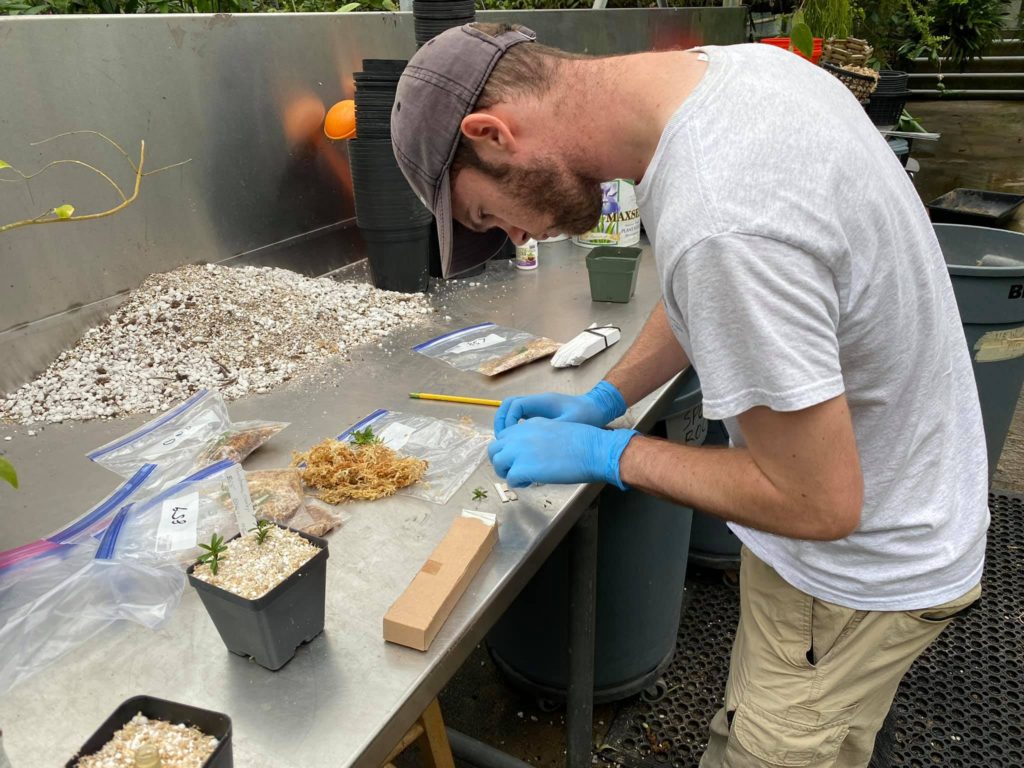
Calab Evans, Atlanta Botanical Garden Horticultural technician, roots cuttings of Mountain lover from recent collection trips 
John Evans, conservation horticulturalist at Atlanta Botanical Garden, and Tara Littlefield, OKNP/KPCA botanist hanging out on limestone cliffs on a recent collection trip
If you would like to know more about these efforts or other Kentucky Plant Conservation Alliance efforts to conserve the rare plants and communities in Kentucky, please contact tara.littlefield@ky.gov.
